A temporary pavilion to celebrate this year’s Australian exhibition takes visitors – present and virtual – into augmented “architectural” reality. Elana Castle reports.
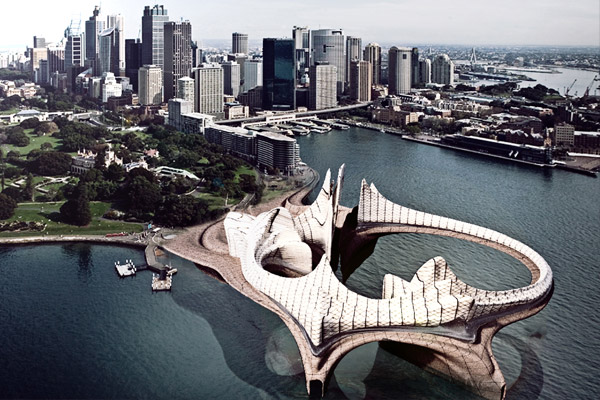
July 1st, 2014
Above: Minifie van Schaik, Caught Unawares, 2013, Sydney, New South Wales, Australia. Digital reconstruction by Ben Juckes. Courtesy: felix.
Augmented Australia 1914-2014 has officially opened in Venice as part of the 14th International Architecture Exhibition. The exhibition was opened by Australian Pavilion Commissioner, Janet Holmes à Court, AC, and Chair of the Australian Institute of Architects’ Venice Architecture Biennale Committee, Brian Zulaikha.
Curated by felix._Giles_Anderson+Goad, the temporary pavilion has been conceived as a virtual bringing to life of a selection of 23 of the most evocative, unbuilt works designed in Australia within the last century.
“Each project was driven by an extraordinary commitment to research and innovation, highlighting Australia’s exceptional heritage and its commitment to a technological future,” explains Rene De Meeuwen, who has spearheaded the exhibition.
Robin Boyd (Romberg & Boyd), Australian World Exposition, Melbourne, Victoria, Australia. Project 1965. Digital reconstruction by Tim Mettam, Elliot Lind, Leo Showell. Courtesy: felix.
However, mystery shrouded the pre-Biennale launch, as the identity of a number of the selected projects were left under wraps. The final eight unrealised historical projects have now been revealed:
The Capitol, Canberra, Australian Capital Territory by Walter Burley Griffin and Marion Mahony Griffin
ANZAC Memorial, Hyde Park, Sydney, New South Wales by Raymond McGrath and Maurice Lambert
Adelaide Boys’ High School, Adelaide, South Australia by Frederick Romberg
The Great Hall, University of Queensland, Brisbane, Queensland by Stuart McIntosh
Public Office Buildings, Perth, Western Australia by GW Finn, EH Van Mens & PC Maidment
State Library of Victoria and Museum of Victoria refurbishment, Melbourne, Victoria by Edmond and Corrigan with Clive Lucas and McConnel Smith and Johnson
Silver City Museum, Broken Hill, New South Wales by Glenn Murcutt
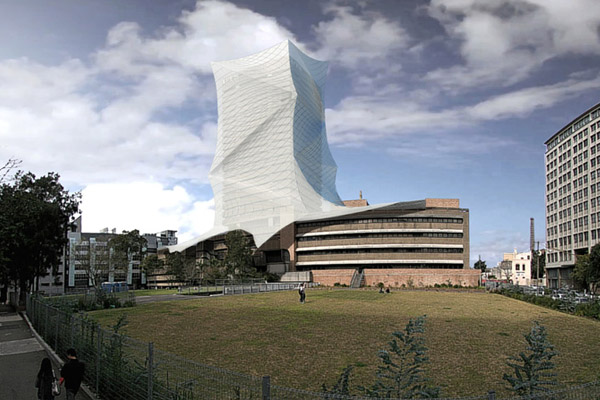
Lava, Tower Skin, UTS Tower, Sydney, New South Wales, Australia. Project 2009-10. Digital reconstruction by Keith Reid and Scott Horsburgh. Courtesy: felix.
Since opening, the venue has attracted hordes of visitors who have been eager to experience ‘Cloud Space’ – an open air pavilion that provides a physical portal to a “virtual reality” experience. Using the Augmented Australia app, display images of each project automatically trigger three-dimensional (3D) augmented models, animations and interviews.
Glenn Murcutt, Silver City Museum, Broken Hill, New South Wales, Australia, Project 1987-8. Digital reconstruction by Eliza Langham and Ara Casella. Courtesy: felix.
The Australian exhibition then extends beyond the Giardini with real-world scale augmented models of each building, geographically positioned in various locations around Venice – the largest exhibition of its kind ever seen.
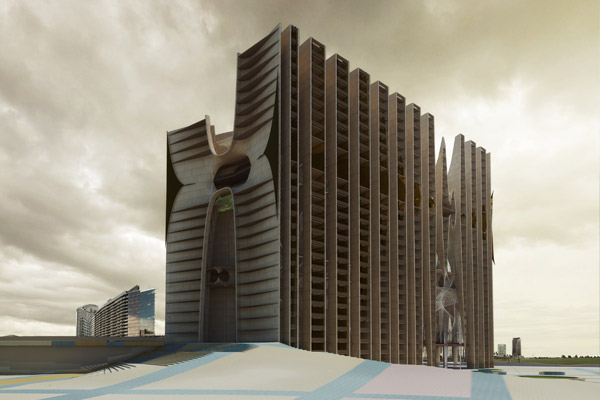 Tessellate A+D, Hybrid Cathedral, Batman’s Hill, Melbourne Docklands, Melbourne, Australia. Project 2013. Digital reconstruction by Keith Reid and Scott Horsburgh. Courtesy: felix.
Tessellate A+D, Hybrid Cathedral, Batman’s Hill, Melbourne Docklands, Melbourne, Australia. Project 2013. Digital reconstruction by Keith Reid and Scott Horsburgh. Courtesy: felix.
Visitors to the exhibition are also able to interact with Denton Corker Marshall’s design for the new Australian pavilion (due for completion in 2015), via a 1:1 scale virtual model overlaid onto its current construction site.
Above: Minifie van Schaik, Caught Unawares, 2013, Sydney, New South Wales, Australia. Digital reconstruction by Ben Juckes. Courtesy: felix.
(All the included projects can now be explored through the official Augmented Australia Catalogue that is available for purchase online and through the app. The catalogue features essays on each project from leading architects, critics and academics, along with trigger images and video commentary that is activated through the app.)
2014 Venice Biennale Australian Pavilion – Augmented Australia
wp.architecture.com.au/venicebiennale
INDESIGN is on instagram
Follow @indesignlive
A searchable and comprehensive guide for specifying leading products and their suppliers
Keep up to date with the latest and greatest from our industry BFF's!

A longstanding partnership turns a historic city into a hub for emerging talent

The undeniable thread connecting Herman Miller and Knoll’s design legacies across the decades now finds its profound physical embodiment at MillerKnoll’s new Design Yard Archives.

Frightening or fascinating? Perth Children’s Hospital takes the nightmare out of hospital visits, inviting curiosity and play into its life-changing spaces.
The internet never sleeps! Here's the stuff you might have missed
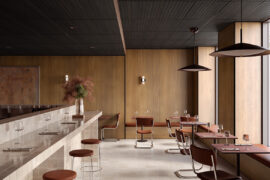
Australian designed and manufactured, Laminex Architectural Panels transform timber design aesthetics with cutting-edge technology
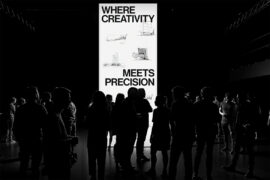
Director Ian Briggs is one of the longest serving members of the Plus team and – with a milestone rebrand complete and a Sydney event just yesterday – he walks us through the state of play at the practice in 2025.